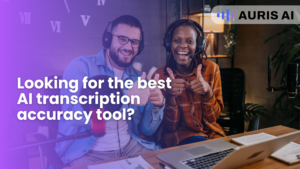In a world where technology rapidly evolves, LLM serves as a bridge between humans and machines. As a result, they allow us to communicate more naturally with AI, helping with tasks that once required significant human effort. For instance, whether it’s assisting a writer in overcoming writer’s block or providing instant translations to connect people across cultures, LLM has a profound impact on our daily lives. In this article we will discover what is LLM meaning.
What Is a Large Language Model (LLM)?
ए बड़े भाषा मॉडल (एलएलएम) is a type of artificial intelligence trained to process and generate human language. These models rely on deep learning and transformer models to analyze vast amounts of text data. Consequently, LLM are widely used in text summarization, transcription, and translation tools.
How Does a Large Language Model Work?
Large Language Model (LLM) works by utilizing deep learning techniques, specifically transformer models, to process and understand text. To clarify, here is a simplified breakdown of how they function:
- Training LLM with Data – LLM is trained using massive datasets containing text from books, websites, and other sources. This process helps the model learn the structure and meaning of human language.
- Neural Networks for Processing – In other words, these models rely on neural networks that simulate the way the human brain processes language, enabling them to recognize patterns and relationships between words.
- Fine-Tuning for Accuracy – After initial training, LLMs undergo fine-tuning, where they are optimized for specific tasks such as summarization, translation, or content generation.
- Generating Human-Like Text – Once trained, the model can generate text based on input prompts, producing coherent and contextually relevant responses.
How to Train a Large Language Model
Training a Large Language Model (LLM) involves several stages:
- Firstly, Data Collection – Gather vast amounts of text data from diverse sources.
- Secondly, Preprocessing – Clean and structure the data to remove inconsistencies.
- Third, Model Training – Use deep learning algorithms to train the model on the dataset.
- Then, Fine-Tuning – Adjust the model for specific applications or industries.
- Lastly, Evaluation and Improvement – Continuously test and refine the model to improve accuracy and efficiency.
How Can LLM Help in Creating Meeting Minutes?
Meeting minutes capture key points from discussions, ensuring clarity and accountability. LLM can make this process more efficient by:
- स्वचालित ट्रांसक्रिप्शन – LLM converts spoken words into text with high accuracy.
- Summarization – AI extracts key points from lengthy discussions, providing concise notes.
- Formatting Assistance – LLM can structure minutes into a readable format, organizing discussions by speaker or topic.
- Error Reduction – Natural language processing minimizes misinterpretations and typos.
Can LLM Be Used for Creating Subtitles?
Yes! LLM is highly effective in generating subtitles for videos by:
- Transcribing Speech into Text – Converting audio into written subtitles.
- Synchronizing with Video – Ensuring that subtitles align perfectly with spoken words.
- Improving Accessibility – Making content available to diverse audiences, including those with hearing impairments or language barriers.
- Enhancing SEO – Videos with subtitles rank better in search engines, increasing visibility.
Is an LLM Useful for Transcription?
Absolutely! LLM improves transcription accuracy and efficiency by:
- Recognizing Multiple Speakers – Differentiating between various voices in meetings or interviews.
- Handling Multiple Languages – Supporting multilingual transcription.
- Understanding Context – Reducing errors by analyzing sentence structure.
- Editing and Formatting – Providing structured, professional transcripts.
AI-generated transcription tools help journalists, content creators, and businesses document conversations efficiently.
Other Benefits of Using Large Language Model
LLM offers numerous advantages in various fields. Some of the other benefits include:
- Automation in Customer Support – Chatbots powered by LLM can assist customers with inquiries, reducing the need for human agents.
- Data Analysis and Insights – LLM can process large amounts of text data and extract valuable insights.
- Enhancing Creativity – This model helps with brainstorming ideas and generating creative content for various industries.
Applications of LLM in Different Industries
Large Language Model is widely used in various sectors, including:
- Healthcare – Assisting in medical research and patient communication.
- शिक्षा – Providing tutoring and personalized learning experiences.
- Marketing – Automating content creation and customer interactions.
- Finance – Analyzing market trends and generating financial reports.
- Entertainment – Creating scripts, lyrics, and interactive storytelling experiences.
The Human Impact of LLM
The rise of LLM is not just about technological advancements; rather, it’s about enhancing human potential. Writers, educators, and professionals now have access to tools that help them work more efficiently.
Furthermore, LLM democratises knowledge by making complex information accessible, empowering individuals to learn and grow.
Looking for an Easy Way to Transcribe Audio and Add Subtitles?
By understanding LLMs and their capabilities, you can explore innovative ways to integrate them into various applications, maximizing their potential in the digital world.
प्रयत्न औरिस एआई—a one-stop platform for AI-powered transcription and subtitle generation. Get started today—Try for free! And visit our Youtube channel to know more about AI features.






